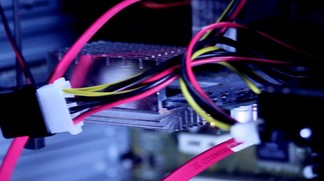Nov 27 2012
Scientists from the School of Computer and Communication Sciences' EcoCloud research center - which was founded to pioneer technologies to make cloud computing scalable, cost-effective and sustainable - have found that reorganizing the inner architecture of the processors used in massive data processing centers can yield significant energy savings.
 © 2012 EPFL
© 2012 EPFL
Streaming data, social networks, online games and services, databases – the number of interactions we have with the Internet is continually increasing. Every time we click on a link, we trigger an avalanche of computer operations that are then carried out in huge server farms. It’s estimated that these massive installations are responsible for 2% of total world electricity consumption. EcoCloud scientists are proposing a novel solution to help rein in this runaway consumption. By integrating the same kind of processor cores that are used in smartphones, the amount of energy needed can be reduced by a factor of four. The results were recently published in an IEEE Micro article.
The giants of the digital world – such as Facebook, Google, Microsoft – all depend on vast, powerful farms with tens of thousands of servers to manage their data processing. To help keep costs down and to improve energy efficiency, chips have been improved and packed as tightly as possible into the processors. But this approach has reached its limits.
EcoCloud’s solution, titled “scale-out processors,” is based on a different approach. They propose a reorganization and redesign of the processors used in the servers. Instead of the current design, which is based on a few very powerful processor cores, they recommend using a greater number of less powerful cores. Each processor could thus respond to a larger number of requests.
Over-powerful
“The vast majority of Internet requests don’t involve complicated analysis, but are generally just retrieval from memory,” explains Boris Grot, from Parallel Systems Architecture Laboratory (PARSA). “But current servers are designed for carrying out a whole range of tasks, from complex scientific calculations to gaming. They’re actually way too powerful for most basic demands. As a result, they’re not being used in an optimal manner.”
The researchers have combined the advantages of new-generation small processor cores developed for smartphone-type devices; their architecture is simple but their processing ability is very efficient. Concentrated in large numbers in a large chip, they would provide a better solution to the way servers are currently used. After having studied and compared several designs, EcoCloud scientists concluded that this arrangement maximizes space in the processors and significantly improves their performance.